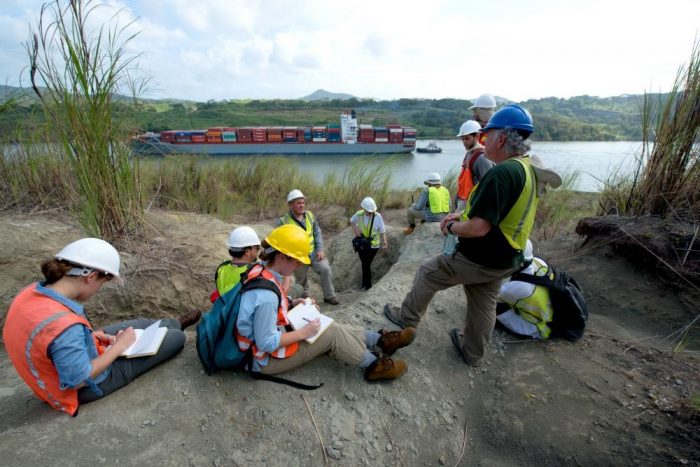Where in the World Is the Smithsonian?
Pretty much everywhere, actually. As the largest education, research and museum organization in the world, the Smithsonian’s reach extends from the depths of the ocean to the outer reaches of space. Our scientists and scholars, curators and conservators, can be found in every corner of the globe. Discover the difference we’re making in communities around the world.
You know that the Smithsonian is far more than the museums on the National Mall, but have you ever wondered what we’re doing in places as far-flung as Kenya, Cuba or Myanmar? Over the past two years, the Office of International Relations has worked with colleagues across the entire Institution to gather data about international Smithsonian projects, and now you can access much of this information on the new Smithsonian Global website.
Developed with the Office of Public Affairs; the former Offices of the Under Secretaries for Science and History, Art and Culture; Smithsonian Enterprises, and with support from public affairs offices across the entire Institution, Smithsonian Global weaves together a cohesive narrative about our international reach.
The site is available in Arabic, Chinese, French and Spanish. We designed the site to appeal to our key international partners, the general public, and for our own internal use. Smithsonian Global has short articles, videos, and a searchable database with information about international programs and the people working on them. If you have an upcoming meeting with an international partner or an international trip, visit our report generator tool to find out what Smithsonian is doing relevant to your work and generate a printable report highlighting projects, people, publications and locations.
Here are a few of the inspiring stories we’ve collected from across our 20 museums, the National Zoo, our nine research centers, and many other units:
Preserving Mongolian Heritage
Discover how Bill Fitzhugh from the National Museum of Natural History and Paula DePriest from the Museum Conservation Institute are working to preserve Mongolian culture at the edge of the Arctic.

Tsaatan children ride reindeer in the fall pasture at Sarig gol, northern Mongolia in August 2003. (Photo by Paula DePriest/Museum Conservation Institute)
Evolution and the Isthmus of Panama
Explore how the expansion of the Panama Canal presented the perfect opportunity for Carlos Jaramillo and researchers of the Smithsonian Tropical Research Institute to discover 24 mammal species and better understand how the Isthmus of Panama changed our climate and the evolution of life in the Americas.

Participants in the Fourth Meeting of the Network for Neotropical Biogeography tour the paleontological excavation sites exposed by the excavation of the Panama Canal. (Photo by Sean Mattson, Smithsonian Tropical Research Institute)
Science for Monks
Learn about how Smithsonian Environmental Research Center forest ecologist Jess Parker, Tracie Spinale of the Smithsonian Center for Learning and Digital Access, and Smithsonian Exhibits’ Scott Schmidt are working with the Science for Monks program in India to build science capacity in Tibetan monastic communities.

Smithsonian Exhibits Production Manager Scott Schmidt (seated) and Tibetan colleagues collaborate on a design for an exhibit. (Photo by Bryce Johnson, Science for Monks.)
Deep Reef Observation Project
Smithsonian Global also features new video content, created with support from the Smithsonian Women’s Committee. If you want to be transported from your desk chair to the lovely waters off Curacao, check out our video feature on National Museum of Natural History marine biologist Carole Baldwin and the Deep Reef Observation Project.
Featuring more than 30 stories and 60 of our Smithsonian colleagues, Smithsonian Global profiles Smithsonian activities all across Africa, the Americas, Asia, Europe and Eurasia, the Middle East and North Africa, and even Antarctica!
We have new content coming online every month, so check back regularly for new stories and video. Please send submissions for the report generator and ideas for new content to global@si.edu. We look forward to continuing to tell our global story with you.
This post from the Office of International Relations is the first in a series that will share the stories of our colleagues around the globe.
Posted: 22 August 2016
-
Categories:
Art and Design , Collaboration , Feature Stories , History and Culture , News & Announcements , Science and Nature



